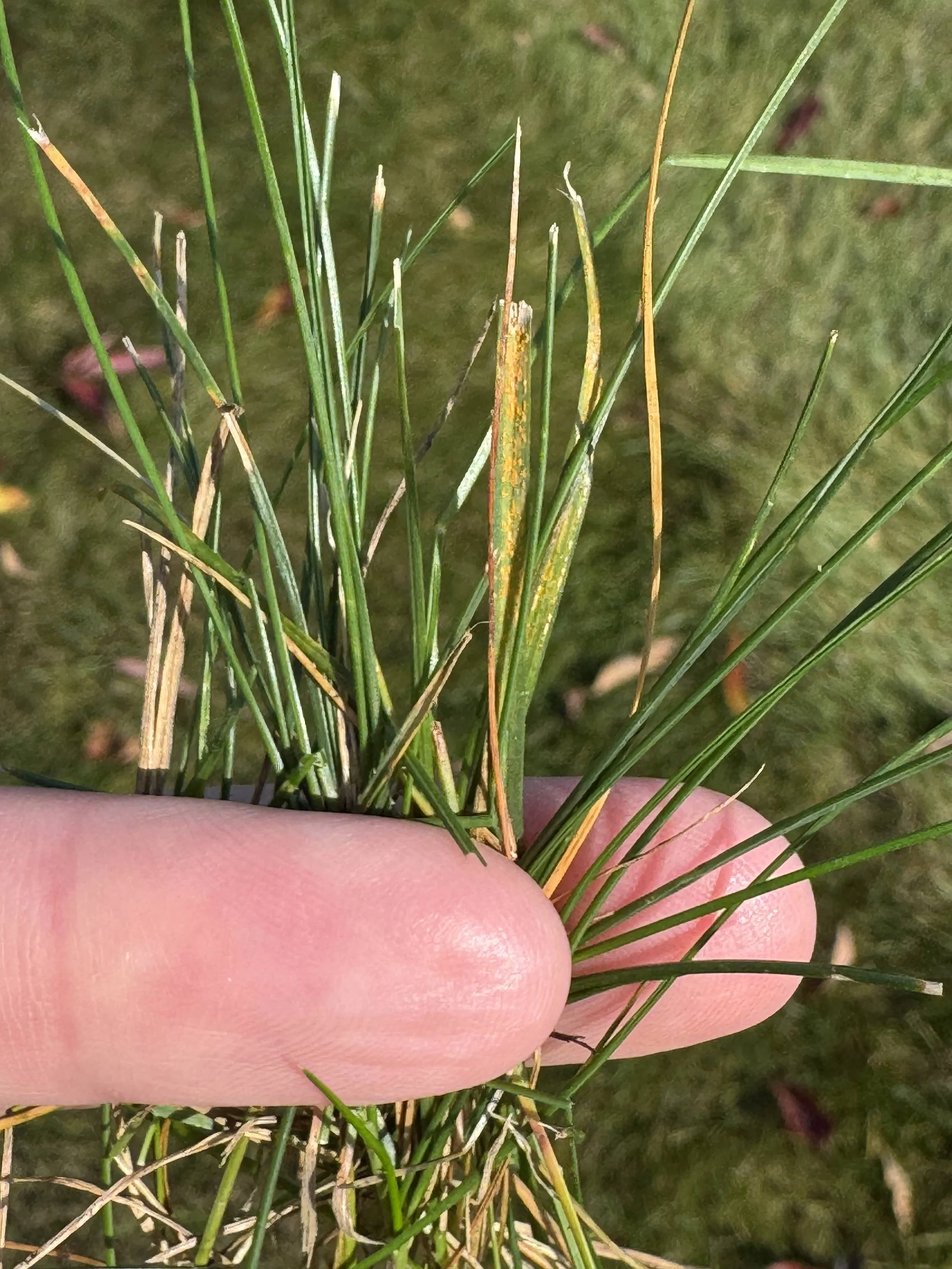What is that lawn rust on my grass?
What Is Lawn Rust and How Can You Treat It?
At Green Meadow Lawn Care, we get a lot of calls asking about an orange, rust-like substance sticking to their shoes after walking across their lawn. If you’ve noticed the same issue, you might be wondering, "What is this, and is it harmful to my lawn?"
The good news is that this isn’t actual rust. What you’re seeing is a type of lawn disease called Lawn Rust. While it may look alarming, Lawn Rust is a common fungal infection that affects grass. Let’s dive deeper into what Lawn Rust is, how to identify it, and how to treat it.
Understanding Lawn Rust: A Common Lawn Fungus
Before we get into the details of Lawn Rust, it’s important to understand that many lawn “diseases” are actually types of fungus. Fungus is a naturally occurring and essential part of the ecosystem in your lawn. While not all fungi are harmful, some can cause visible issues like Lawn Rust.
Lawn Rust specifically is a fungal disease that typically shows up in late summer or early autumn, especially in shaded areas and on lawns with low nitrogen levels. It tends to affect common grass varieties such as Kentucky Bluegrass, Perennial Ryegrass, and Tall Fescue.
Signs of Lawn Rust
From a distance, a lawn infected with Lawn Rust might look relatively normal. However, upon closer inspection, you’ll start to notice the telltale signs of this disease. Here’s what to look out for:
Yellow or Orange Spots on Grass Blades: The most distinguishing feature of Lawn Rust is the appearance of tiny yellow or orange dots on individual grass blades. These dots are actually fungal spores, which is why they can easily rub off onto your shoes, mower, or pets.
Rust-Colored Residue: When you walk through a lawn with Lawn Rust, you’ll notice an orange, powdery residue left behind on your shoes. This is a clear indicator that the disease is present.
Affected Grass: Although Lawn Rust isn’t usually fatal to your grass, it can weaken the grass blades, causing the lawn to look dull or unhealthy over time.
Traits of Lawn Rust
Understanding the conditions that promote Lawn Rust can help you prevent it from occurring. Here are some key traits of the disease:
Prefers Shade: Lawn Rust tends to develop in shaded areas of your lawn where there is less sunlight. Grass in these spots may not dry as quickly after watering or rain, which creates a favorable environment for fungal growth.
Thrives in Low Nitrogen Environments: Lawns with low nitrogen levels are more susceptible to Lawn Rust. Nitrogen is a key nutrient that helps grass grow strong and resist diseases. Without enough nitrogen, your lawn becomes vulnerable to infections like Lawn Rust.
Most Common in Early Autumn: Lawn Rust typically appears in late summer or early autumn when there are cool nights and warm days. The combination of moisture and temperature changes creates the perfect conditions for the fungus to grow.
Spreads Easily: In its powdery form, Lawn Rust spores can spread through wind, on lawn equipment, or even by people and pets walking through the infected area. This means it can quickly spread across your entire yard if not treated properly.
How to Manage and Treat Lawn Rust
While Lawn Rust may look unsightly, the good news is that it’s relatively easy to manage and control with the right care. Here’s how to treat it:
Increase Nitrogen Levels: Since Lawn Rust thrives in low-nitrogen environments, one of the most effective treatments is applying a nitrogen-rich fertilizer in your lawn care program. This will give your grass the nutrients it needs to fight off the fungus and promote healthy growth.
Mow and Water Properly: Regular mowing and proper watering habits can help prevent Lawn Rust. Make sure you’re mowing at the recommended height for your grass type and avoid overwatering. Watering in the morning allows the grass to dry off during the day, reducing moisture that promotes fungal growth.
Improve Air Circulation: Since Lawn Rust favors shaded and damp areas, improving air circulation can help prevent it. If possible, trim back nearby trees or shrubs to allow more sunlight to reach the grass.
Rake and Remove Debris: Regularly raking your lawn to remove thatch and other debris can also help reduce fungal spores from building up and spreading. Keeping your lawn clean and well-maintained is key to preventing fungal infections.
Aerate the Soil: Aerating your lawn once a year can help alleviate compacted soil and promote healthier root systems. This also improves water drainage, reducing the chance of fungal infections like Lawn Rust.
Prevention is Key
The best way to keep Lawn Rust from returning is through proactive lawn care. A healthy, well-maintained lawn is less likely to suffer from fungal infections. By maintaining the right nitrogen levels, watering correctly, and ensuring good air circulation, you can prevent Lawn Rust from developing in the first place.

